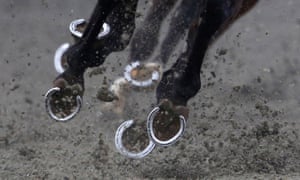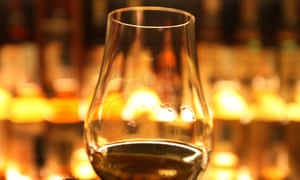via Interesting Literature
The best poems of D. H. Lawrence
Although he’s best-known for novels such as Sons and Lovers and Lady Chatterley’s Lover, and for short stories such as ‘The Rocking-Horse Winner’, D. H. Lawrence was also a prolific poet whose work ranged from formally conventional poems to sprawling free verse influenced by Walt Whitman. What follows is our pick of ten of the greatest poems from Lawrence’s vast oeuvre of poetry.
Continue reading
==============================
Rumours swell over new kind of gravitational-wave sighting
via 3 Quarks Daily: Davide Castelvecchi in Nature
Gossip over potential detection of colliding neutron stars has astronomers in a tizzy.

The galaxy NGC 4993 (fuzzy bright spot) in the constellation Hydra, where detectors are rumoured to have spotted gravitational waves from a neutron star merger.
Astrophysicists may have detected gravitational waves last week from the collision of two neutron stars in a distant galaxy – and telescopes trained on the same region might also have spotted the event.
Rumours to that effect are spreading fast online, much to researchers’ excitement. Such a detection could mark a new era of astronomy: one in which phenomena are both seen by conventional telescopes and ‘heard’ as vibrations in the fabric of space-time. “It would be an incredible advance in our understanding,” says Stuart Shapiro, an astrophysicist at the University of Illinois at Urbana-Champaign.
Continue reading
==============================
Why did Siam join the First World War?
via The National Archives Blog by Pad Kumlertsakul
There is a little-known history regarding Siam’s decision to participate in the First World War on the side of the Allies, rather than remain neutral; something that can be explained in terms of political necessity and the survival of Siam.
During the reign of King Vajiravudh (1910-1925) Siam was the only independent country in the region that did not suffer from the demands for territory or other concessions. However, Siam’s sovereignty had suffered from encroachment, violations and limitations imposed by Western imperialism since the mid-19th century. In effect Siam was regarded as a second-rate nation in the international community, with limited autonomy in foreign relations, economics and commercial and judicial affairs.
Nevertheless, Siam managed to maintain independence from imperialist expansion. It benefited from rivalry between the European great powers, and used skilful diplomacy to become one of the founding members of the League of Nations in 1919.
Continue reading
==============================
Travelling with Shakespeare
via OUP Blog by Kim Vollrodt

“Carte d’Europe” by Jean-Claude Dezauche, 1789. Public Domain via Wikimedia Commons.
William Shakespeare is celebrated as one of the greatest Englishmen who has ever lived and his presence in modern Britain is immense. His contributions to the English language are extraordinary, helping not only to standardize the language as a whole but also inspiring terms still used today (a prime example being “swag” derived from “swagger” first seen in the plays Henry V and A Midsummer Night’s Dream). Shakespeare’s image even graced the British £20 note from 1970 to 1993, and people from all over the world come to visit the playwright’s birthplace in Stratford-upon-Avon and the famous Globe Theatre in London.
However, it is not only in England that Shakespeare has left his literary mark: “All the world’s a stage” begins a monologue from As You Like It, and Shakespeare sets up his fictional stages all over the early modern world, most frequently in Europe and the Mediterranean shores. From Macbeth’s dreary Scotland to the “Kronborg” of Hamlet’s Denmark or the sunnier climes of “fair Verona”, there is a celebrated internationality in Shakespeare’s work. Often based on historic events or legends deeply embedded in Europe’s continental and regional histories, Shakespearean settings influenced viewers and readers not only in Shakespeare’s time, but right up to the present day.
Continue reading
==============================
How the horse became the only living animal with a single toe
via the Guardian by Nicola Davis
The ancient ancestors of horses had four toes on their front feet and three on their back – but modern horses have just one. A new study could explain why.

Researchers say over time horse side toes may have been lost to help them move faster and more efficiently. Photograph: Alan Crowhurst/Getty Images
They can reach speeds of more than 40km an hour, clear hurdles more than eight feet high and – and they manage it all with just one toe on each foot. Now researchers say they have unpicked how and why horses ended up with their unusual extremities.
The only living animals with a single toe, equines (such as horses and zebras) had ancestors with multiple digits on their feet, with early relatives having four on their front feet and three on their back.
While it has long been thought that the shift was linked to horses moving from forest to grassland environments, it was unclear how this anatomical change happened.
Now researchers say they have cracked the conundrum.
Continue reading
==============================
Gottschalk: a ninth-century heretic, dissenter, and religious outlaw
via OUP Blog by Matthew Bryan Gillis

Image courtesy of Stuttgart, Wuerttembergische Landesbibliothek, Cod. bibl. fol. 23, f. 76v (detail). Used with permission.
“Just as a dog returns to its own vomit, so a fool reverts to his folly” (Proverbs 26:11). Thus did medieval church officials condemn unrepentant heretics and those who recanted, but later allegedly returned to their crimes. The typical punishment – burning at the stake – purged the offenders’ pollution from the church. This familiar image of burning heretics shapes today’s popular and scholarly perspectives of the European Middle Ages. Perhaps surprisingly, this practice was unknown in the early medieval West. In the eighth and ninth centuries, authorities of the Carolingian Empire didn’t hesitate to decapitate, blind, or mutilate political traitors and apostates to the Christian faith. Yet the realm executed no heretics. In fact, the empire produced little heresy whatsoever. Ecclesiastical officials certainly worked to eliminate sin’s polluting and corrupting powers, but they largely saw the problem of heresy as an evil defeated by the ancient church, or one posed by foreign Christians. Carolingian rulers, bishops, and intellectuals took it upon themselves to condemn ancient heresies and to combat foreign ones in their writings and synods. By contrast, native incidents of heresy or heresy accusations were few in number, isolated, and quickly resolved. Instead of battling local heresies, imperial authorities focused their energies on a process of correction and moral improvement for all baptized subjects. Maintaining spiritual purity in this way enabled the empire to retain the heavenly favor that insured prosperity in this world and salvation in the next.
Continue reading
==============================
The other battle of Samarra
via The National Archives Blog by Dr Juliette Desplat
On 22 April 1917 the Mesopotamian Expeditionary Force captured Samarra, some 80 miles north of Baghdad. There, the military authorities made a discovery that triggered another battle of Samarra: an archaeological one.
In an old building in Samarra the British troops found about 90 cases of antiquities, left there by the German archaeologists who had been excavating the site in 1914, Ernst Herzfeld and Friedrich Sarre.
These antiquities came to the attention of the Foreign Office in the summer of 1918, at a time when officials were increasingly aware of the importance of antiquities and ancient monuments. When it appeared that orders had been issued for the despatch of the Samarra antiquities to London, the Foreign Office protested vigorously. ‘It would be as bad,’ they wrote, ‘as the Germans removing the art treasures from Belgium and France’ (FO 371/3410).
Continue reading
==============================
Scientists reveal why whisky tastes better with water
via the Guardian by Hannah Devlin, Science correspondent

Neat, on the rocks or with a dash of water? It’s long been a controversial decision.
Photograph: David Cheskin/PA
How best to enjoy whisky has long been debated, but two chemists say they have discovered why diluting your dram might make it taste better
Neat, on the rocks, or with a dash of mineral water. Whisky enthusiasts have long disagreed about how the amber nectar is best enjoyed, but now a scientific paper has backed the idea that diluting whisky can enhance its flavour.
The work suggests that adding water boosts the concentration of flavour compounds at the surface of the drink, helping to unleash the rich mix of aromas.
Björn Karlsson, a chemist at Linnæus University in Sweden and the paper’s co-author, said: “What came out from our study is that adding water to whisky should make it taste better.”
Karlsson and his co-author, Ran Friedman, had come across the idea that adding water to whisky improved the taste and aroma. “Neither of us are big whisky drinkers,” he said. “But we were interested in the chemistry.”
==============================
Stars orbiting supermassive black hole show Einstein was right again
via 3 Quarks Daily: from Phys.org

At the center of our galaxy, roughly 26,000 light years from Earth, lies the supermassive black hole (SMBH) known as Sagittarius A*. Measuring 44 million km across, this object is roughly 4 million times as massive as our Sun and exerts a tremendous gravitational pull. Since astronomers cannot detect black holes directly, its existence has been determined largely from the effect it has on the small group of stars orbiting it.
Continue reading
==============================
Warp your mind for a minute or twenty with this interactive ribbon animation
via Boing Boing by Andrea James

Turn out the lights, put on some trippy tune, and have fun moving around in Zhouyuan Li's color-shifting 3D matrix of undulating ribbons.
Continue reading
No comments:
Post a Comment